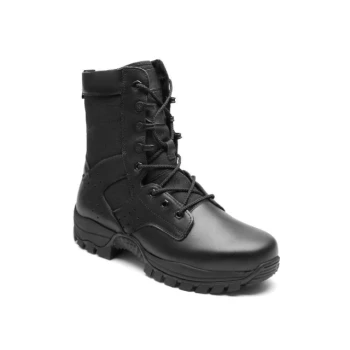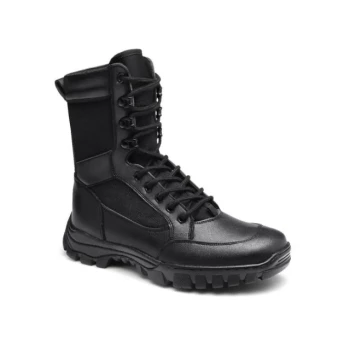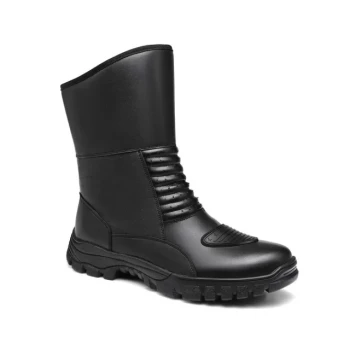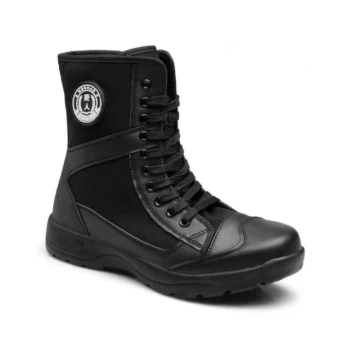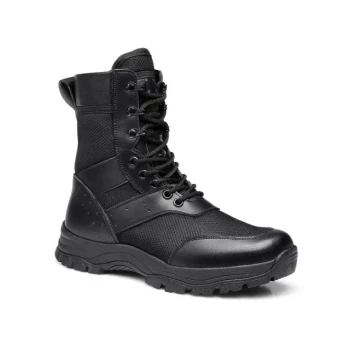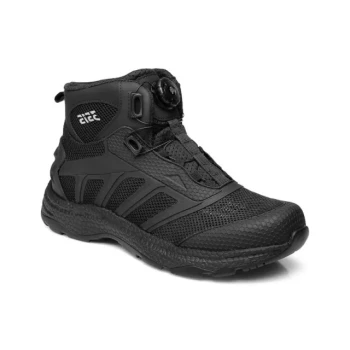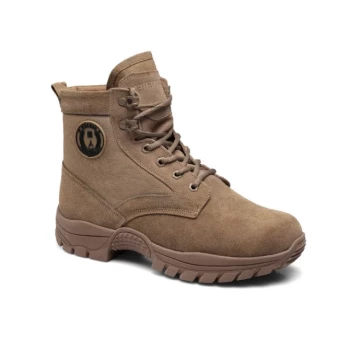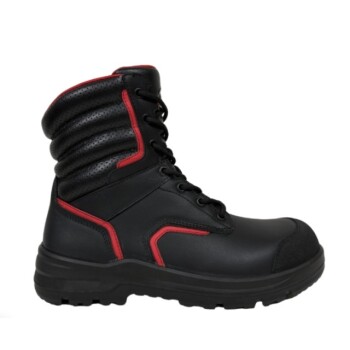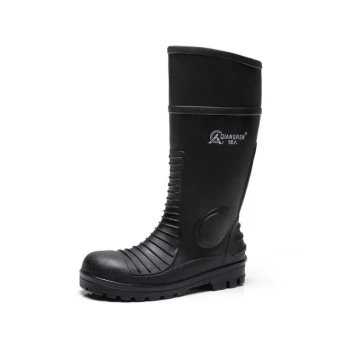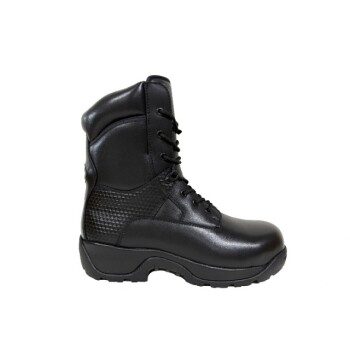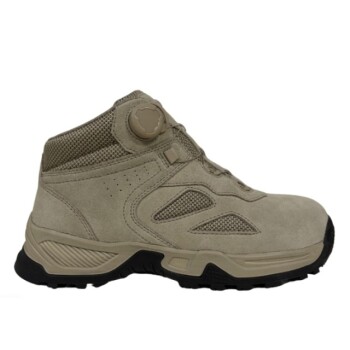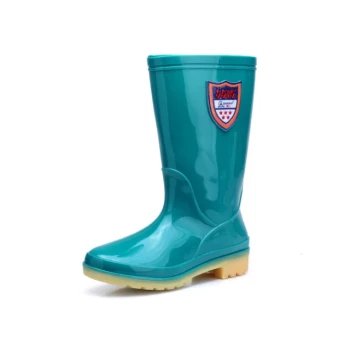At their core, the primary difference is one of design philosophy. Tactical boots are intentionally engineered to be more flexible, allowing for natural foot movement and agility. In contrast, combat boots are significantly stiffer, a feature designed to prioritize uncompromising support and protection over flexibility.
The choice between these boots is not about which is "better," but which is the correct tool for the mission. Tactical boots offer the flexibility needed for speed and comfort, while combat boots provide the rigid durability required for protection in extreme conditions.

The Design Philosophy: Agility vs. Armor
The flexibility of a boot is a direct result of its intended purpose. One is built for speed and versatility, the other for resilience and survival.
Tactical Boots: Built for Movement
Tactical boots are designed for professionals who need to move quickly and comfortably for long periods, such as law enforcement or first responders.
Their construction prioritizes being lightweight and athletic. This reduces fatigue over a long shift and allows for a more natural stride during bursts of activity.
The enhanced flexibility is crucial for tasks requiring agility, such as running, climbing, or moving quietly.
Combat Boots: Engineered for Survival
Combat boots are purpose-built for military personnel operating in rugged and unpredictable environments where protection is paramount.
The stiffness is a deliberate feature. It creates a stable platform on uneven ground, helps support the ankle when carrying heavy loads, and protects the foot from impacts and environmental hazards.
These boots are constructed from heavy-duty materials like full-grain leather and ballistic nylon, built for maximum durability in the harshest conditions.
Anatomy of Flexibility: Key Construction Differences
The distinct feel of each boot comes from fundamental differences in how they are made, from the sole to the ankle shaft.
Sole and Midsole
A tactical boot features a sole that is firm enough for rough terrain but flexible enough to bend with the foot's natural motion.
Combat boots have thicker, more rigid outsoles. This design is critical for preventing punctures and providing a solid, unyielding base of support.
Upper Materials
Tactical boots often use a combination of leather and lighter synthetic materials like nylon. This blend enhances breathability and reduces weight, which directly contributes to their flexibility.
Combat boots lean heavily on robust materials that can withstand extreme abuse. This focus on durability inherently creates a stiffer, more protective upper.
Ankle Support
While both provide support, the approach differs. Tactical boots offer support that still permits a wide range of ankle motion.
Combat boots typically feature a higher, more rigid ankle shaft. This design is meant to lock the ankle in place, preventing sprains and twists when navigating dangerous terrain.
Understanding the Trade-offs
Choosing one style of boot means accepting the inherent compromises in its design.
The Cost of Flexibility
The lightweight agility of tactical boots comes at the cost of reduced protection. They offer less defense against punctures, heavy impacts, and extreme weather.
They are also less suitable for carrying heavy rucksacks over broken ground, where the foot requires a more rigid platform to prevent fatigue and injury.
The Burden of Protection
The superior protection of combat boots results in increased weight and a longer break-in period.
This stiffness can feel cumbersome and slow for activities that demand sprinting, sneaking, or rapid changes in direction.
Making the Right Choice for Your Mission
Your specific environment and the tasks you perform should be the only factors that guide your decision.
- If your primary focus is daily wear, speed, and comfort: Choose tactical boots for their lightweight, flexible design that feels more like an athletic shoe.
- If your primary focus is maximum protection and support in rugged terrain: Choose combat boots for their unyielding durability and stability under extreme conditions.
- If your primary focus is law enforcement or emergency response: Choose tactical boots to balance the mobility needed for active situations with the support required for long shifts.
- If your primary focus is military deployment or extreme outdoor survival: Choose combat boots, as their protective features are non-negotiable in hazardous environments.
Ultimately, selecting the right boot is about matching the tool's intended function to your specific operational needs.
Summary Table:
| Feature | Tactical Boots | Combat Boots |
|---|---|---|
| Primary Focus | Agility, Speed, Comfort | Protection, Durability, Support |
| Flexibility | High (Built for movement) | Low (Stiff for stability) |
| Ideal For | Law Enforcement, First Responders, Daily Wear | Military Deployment, Rugged Terrain, Heavy Loads |
| Key Trade-off | Less protection for greater mobility | Less mobility for maximum protection |
Need the Right Boots for Your Team's Mission?
As a large-scale manufacturer, 3515 produces a comprehensive range of tactical and combat footwear for distributors, brand owners, and bulk clients. Our production capabilities encompass all types of boots, ensuring you get the perfect balance of flexibility, durability, and support tailored to your operational needs.
Let us help you equip your team with the right tool for the job.
Contact 3515 today for expert consultation and bulk pricing!
Visual Guide
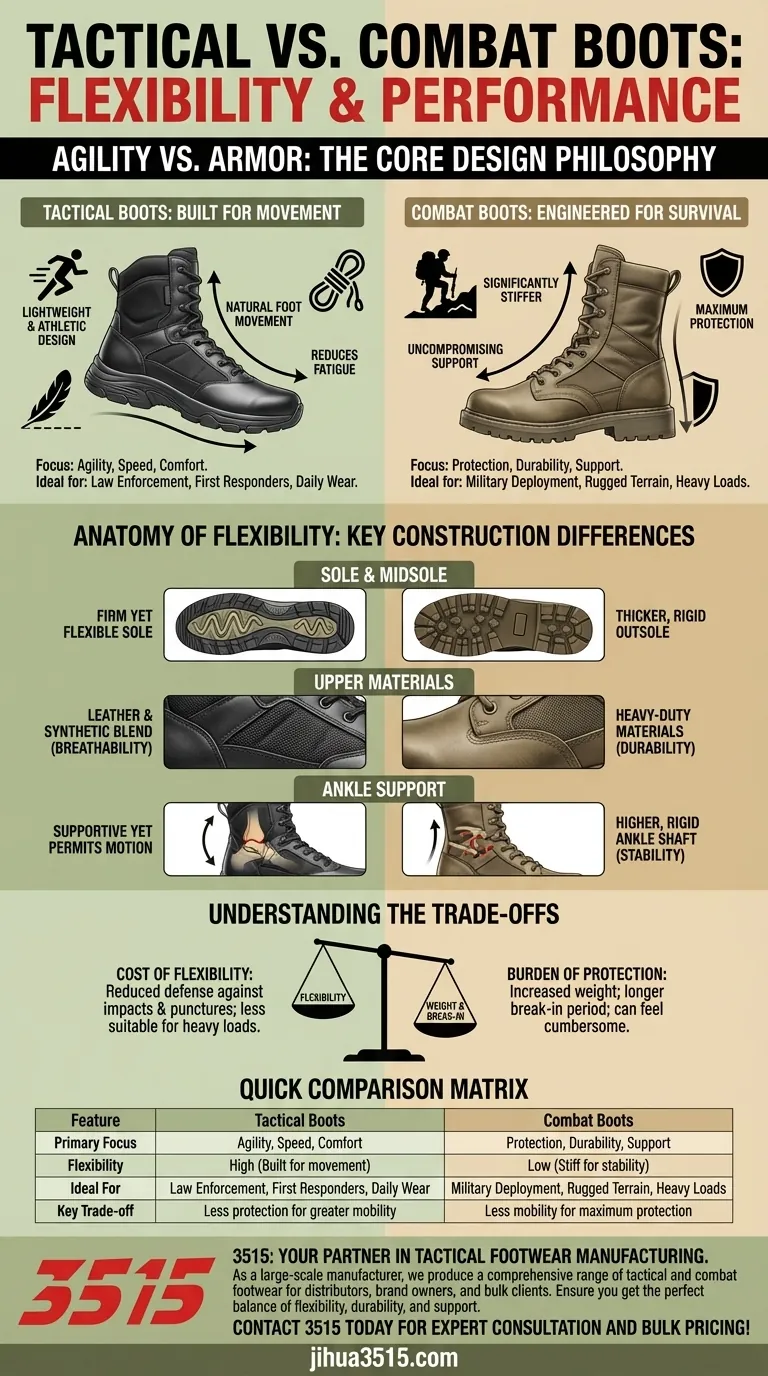
Related Products
- Durable Leather Tactical Boots Wholesale & Custom Manufacturing for Brands
- Durable High-Ankle Tactical Boots Wholesale Manufacturer for Custom & Bulk Orders
- Wholesale Tactical Boots High-Traction & Reflective for Bulk & Brand Orders
- Durable Mid-Cut Tactical Boots for Wholesale & Private Label
- Durable High-Ankle Tactical Boots for Wholesale & Custom Manufacturing
People Also Ask
- What are the steps to clean full-grain leather military boots? Preserve & Protect Your Gear
- What additional comfort features should be considered in tactical boots? Enhance Endurance and Performance
- What does the upper part of a tactical boot cover? Your Guide to Protection, Fit, and Performance
- What features distinguish a tactical boot from regular boots? Uncover the Key Design Differences
- Why is conditioning important for full grain leather tactical boots? Prevent Cracking & Ensure Longevity
